
In biology, a type is a particular specimen of an organism to which the scientific name of that organism is formally associated. In other words, a type is an example that serves to anchor or centralizes the defining features of that particular taxon. In older usage, a type was a taxon rather than a specimen.

Crataraea is a genus of rove beetles in the family Staphylinidae. There is at least one described species in Crataraea, C. suturalis.

The Phaegopterina are a subtribe of tiger moths in the tribe Arctiini, which is part of the family Erebidae. The subtribe was described by William Forsell Kirby in 1892. 469 species of Phaegopterina are present and 52 that are recently discovered in Brazil.

The Aganainae are a small subfamily of moths in the family Erebidae. The adults and caterpillars of this subfamily are typically large and brightly colored, like the related tiger moths. Many of the caterpillars feed on poisonous host plants and acquire toxic cardenolides that make them unpleasant to predators. Like the closely related litter moths, the adults have long, upturned labial palps, and the caterpillars have fully or mostly developed prolegs on the abdomen. The Aganainae are distributed across the tropics and subtropics of the Old World.

Lophocampa is a genus of moths in the family Erebidae. The genus was erected by Thaddeus William Harris in 1841. It contains around 75 species.
Concepción Pápalo is a town and municipality in Oaxaca in south-western Mexico. The municipality covers an area of 94.4 km2. It is part of Cuicatlán District in the north of the Cañada Region.

Homoeocera gigantea is a moth of the subfamily Arctiinae first described by Herbert Druce in 1884. It is found from Guatemala to Costa Rica, generally at high altitude in very humid biotopes. It is not presently known from Nicaragua, possibly because collecting at high altitude is difficult due to the topography of the country.

Homoeocera georginas is a moth of the subfamily Arctiinae. It is known only for a restricted area in Guatemala, on the Pacific slope, at high altitude.

Homoeocera papalo is a moth of the subfamily Arctiinae. It is known only from a very restricted area in Oaxaca state in Mexico, at high altitude.
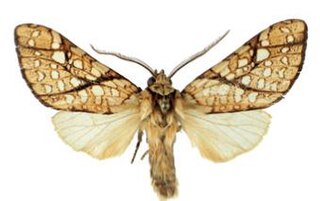
Lophocampa lineata is a moth of the family Erebidae. It was described by Vincent in 2011. It is probably restricted to middle elevations of the central cordillera in the Dominican Republic. The habitat is montane cloud forest.

Lophocampa brunnea is a moth of the family Erebidae first described by Benoit Vincent in 2011. It is known from Guatemala.
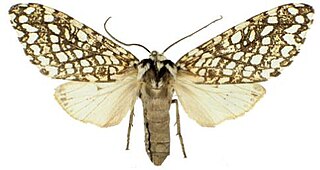
Lophocampa albitegula is a moth of the family Erebidae. It was described by Benoit Vincent in 2011. It is probably restricted to high elevations of the Sierra de Bahoruco in the Dominican Republic, although it could be present in the Sierra de Neiba. The habitat is montane cloud forest.
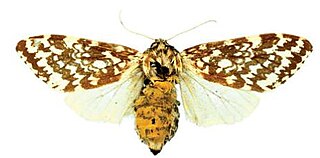
Lophocampa alternata is a moth of the family Erebidae. It was described by Augustus Radcliffe Grote in 1867. It is known from Cuba.

Lophocampa propinqua is a moth of the family Erebidae first described by Henry Edwards in 1884. It is known from Mexico and Central America.

Lophocampa montana is a moth of the family Erebidae. It was described by William Schaus in 1911. It is known from Poás Volcano in Costa Rica.

Lophocampa atriceps is a moth in the family Erebidae. It was described by George Hampson in 1901. It is found in Colombia, Ecuador (Guayas) and Costa Rica.
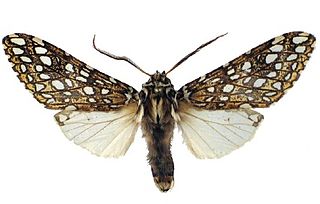
Lophocampa herbini is a moth in the family Erebidae. It was described by Vincent & Laguerre in 2013. It is found in Bolivia and Peru (Cuzco).

Leucanopsis infucata is a moth of the family Erebidae. It was described by Carlos Berg in 1882 and is found in Argentina.
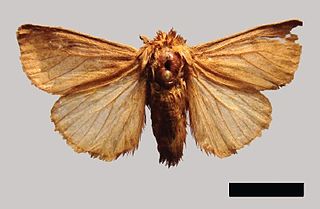
Paracles argentina is a moth of the subfamily Arctiinae first described by Carlos Berg in 1877. It is found in Corrientes Province, Argentina.

Electrostephanus is an extinct genus of crown wasp in the hymenopteran family Stephanidae, and is the only genus placed in the subfamily Electrostephaninae. The genus contains four described species, E. brevicornis, E. neovenatus, E. janzeni, and E. petiolatus, placed in two subgenera E. (Electrostephanus) and E. (Electrostephanodes). Electrostephanus is known from several middle Eocene fossils which have been found in Europe.


















